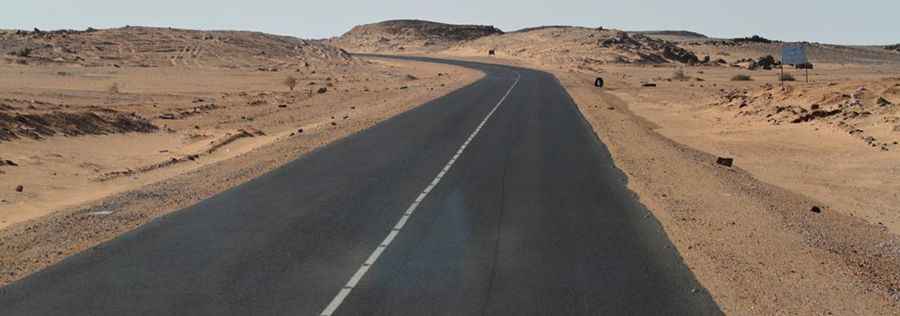Trans-Sahara Highway, 4.500km of true adventure in Africa
Trans-Sahara Highway is one of the most brutal roads in the world. Running for 4,500km through Algeria, Niger and Nigeria, it's a real test that attracts the brave and the crazy.

How long is the Trans-Sahara Highway?
The road, known as TSH, is 2,800-mile (4,506-kilometer) long, and passes through only three countries: Algeria, Niger and Nigeria. Although plagued by security risks along some sections, the biggest danger is in going head-to-head with one of the world's most intensely harsh environments. Adventure-seekers may covet travelling this route for the all-out kudos involved but its real attraction is the opportunity it affords to savour the Sahara at its most spellbinding.
Where does the trans-Saharan highway start and end?
The road links Algiers in Algeria and Lagos in Nigeria. Though about 85% of the road is now paved, there are still several miles of this desert road that are little more than tracks in the sand. This isn't a trip to be undertaken lightly. You'll need a 4WD, extensive desert driving and mechanical experience, and you must be self-sufficient in supplies and equipment. You'll also have to jump through several bureaucratic hoops in order to get the paperwork and visas necessary for this kind of expedition. Anyone contemplating a trip here should be aware that travellers with their own vehicle are required by Algerian law to hire a local escort in Southern Algeria and that the Algeria-Niger border is often closed to foreigners due to instability in northern Niger.
What is it like to travel on the Trans-Sahara Highway?
Due its unique location and passing through remote areas, it is important when driving in these conditions to be prepared. Even the newly paved portions of the road often disappear under immense drifts of sand that block the route for days at a time. With few supplies available along the road, as well as regular sandstorms and extreme heat, the Trans-Sahara Highway is undoubtedly one of the most difficult drives on the planet. The sand can cause other problems, too — sand storms are frequent. Although most of the road is paved, the road is in pretty bad condition with plenty of potholes and bumps along the way. Couple this with temperatures rising up to 50°C and sandstorms so strong that the road is sometimes undriveable and you’ll soon see why this 2,800 mile stretch is considered one of the world’s most dangerous. The highway passes through deserted areas. The Algerian section of the road is considered to be the most dangerous and troubled. The weather on this zone is harsh. It can be extremely hot. Its central section is still little-used though, and still requires special vehicles and precautions to be taken to survive the harsh environment and climate of the center of the desert. Daytime temperatures are scorching, and fuel and water are in scarce supply along much of the route, so you'd better hope the needle doesn't touch "E" and that your radiator doesn't blow. And even the newly paved portions of the road often disappear under immense drifts of sand that block the route for days at a time.
Pic: https://www.iru.org/resources/newsroom/tir-solution-trade-challenges-maghreb-and-sub-saharan-africa